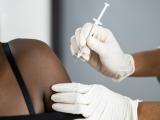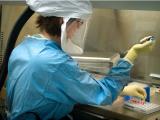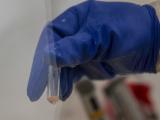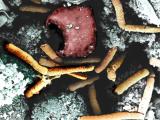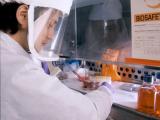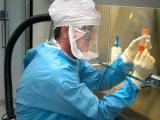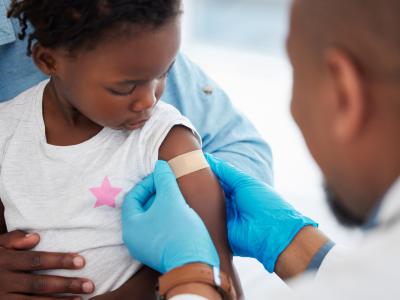Jun 6, 2002 (CIDAP News) – Blood serum tests have confirmed the suspected case of cutaneous anthrax in a Texas laboratory worker that was first reported in early April, according to the Centers for Disease Control and Prevention (CDC).
Although the history and clinical signs indicated cutaneous anthrax, the CDC previously classified the case as suspected because a swab from the man's lesion was tested in the same lab where the man worked. The swab could have been contaminated by anthrax present in the lab, which was investigating environmental samples gathered during last fall's anthrax outbreak, the CDC said at the time.
A series of serologic tests confirmed the anthrax diagnosis, the CDC reported in the Jun 7 issue of Morbidity and Mortality Weekly Report. "A greater than fourfold rise from baseline in the concentration of immunoglobulin G to protective antigen [a component of anthrax toxin] was demonstrated," the report states. "The peak antibody level was observed 7-8 weeks after the onset of symptoms, and the time course and levels of detectable antibodies were consistent with those seen in other cases of cutaneous anthrax."
"This case brings the number of anthrax cases identified in the United States since October 3, 2001, to 23, including 11 inhalation and 12 cutaneous (eight confirmed and four suspected)," the report says. "This is the first laboratory-acquired case of anthrax associated with the recent investigation."
As reported previously, the worker's anthrax lesion developed from a shaving cut on his jaw, and he was treated successfully with antibiotics. Investigators believe the worker was exposed to Bacillus anthracis when he handled vials containing the organism with bare hands. The vials had been sprayed with 70% isopropyl alcohol, which does not kill spores, instead of a bleach solution because bleach had caused labels to fall off. A culture of the vial tops tested positive for B anthracis at the worker's lab and at the CDC, the report states. "This case underscores the importance of safe laboratory procedures and anthrax vaccination for workers routinely handling B. anthracis isolates," the CDC said.
CDC. Public health dispatch: update: cutaneous anthrax in a laboratory worker—Texas, 2002
http://www.cdc.gov/mmwr/preview/mmwrhtml/mm5122a4.htm
